Today, we spent nearly four hours at Little Bighorn Battlefield National Monument, the site of Custer’s Last Stand. Before starting the self-guided auto/walking tour, we listened to the Ranger Talk. The park ranger was a gifted story-teller. No one in the audience whispered, checked their cell phones, or left–we were all spellbound by his story. Luckily for my readers, I’m going to write the short version.
The United States signed a treaty that granted the sacred land of the Black Hills region to the Sioux forever, with the promise that no white man could trespass on that land–except the railroad. Indians were allowed to hunt outside the reservation, but could not live outside the reservation boundaries. Unfortunately for the Sioux, gold was discovered in the Black Hills and the “no trespassing” clause was disregarded by the whites.
As increasing numbers of whites began to settle in the area, Sitting Bull, Crazy Horse, and a few other chiefs were dissatisfied with the reservation situation and the many broken promises made by the white people. The chiefs wanted nothing more than to live their traditional way of life. With the growing tension between the Indians and the whites, the chiefs encouraged their people to take a stand. Increasing numbers of renegade Indians began living outside the reservation, encouraged by Sitting Bull and Crazy Horse. The U.S. Army ordered all “hostile” Indians in Montana to return to their reservations or risk being attacked. Sitting Bull and Crazy Horse ignored the order and urged other tribes to unite with them to meet the white threat. As a result, more than 10,000 Indians gathered in a camp on the Little Bighorn River.
Military scouts found evidence of the Montana Indian settlement and Gen. George A. Custer was ordered to find Sitting Bull’s camp and to block the Indians’ retreat into the Bighorn Mountains. Past experience had shown the U.S. Army that Indian villages were usually small and that, when attacked, the Indians tended to flee. Eager to repeat his recent military triumphs, Custer ignored the scouting reports and chose to launch an immediate attack on the village instead of waiting for reinforcements. He divided his troops into three battalions: one made a direct assault on the village; the second was sent in a sweeping arc to cut off any fleeing Indians. Custer’s own battalion moved along the bluffs above the village. The remaining 215 soldiers were left to guard the supply wagons.
When the first battalion found itself under attack by a large force of warriors, Custer realized the scouting reports had not been exaggerated. He ordered his troops to regroup, but all three battalions were under attack by about 3,000 braves. Within an hour, every man in all three battalions was dead. The soldiers left behind to guard the supply wagons managed to fight until the Indians withdrew the following day. The fact that any of these soldiers survived was solely due to the timely arrival of the reinforcements.
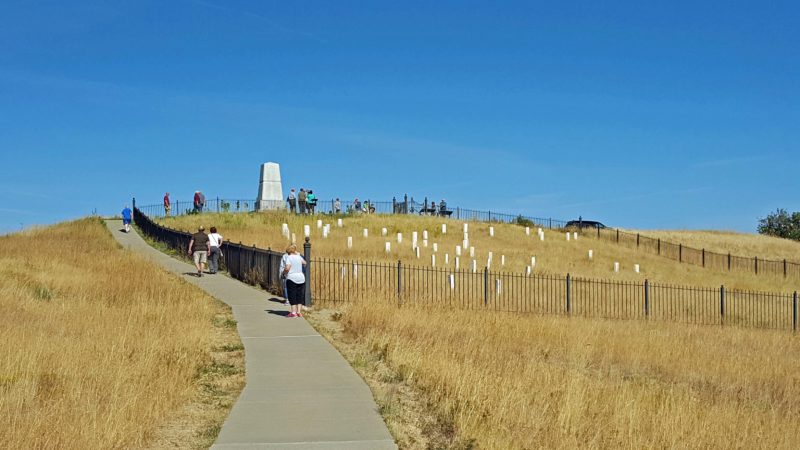
The Little Bighorn monument where Custer’s battalion fought. Headstones are placed where identified soldiers were found.
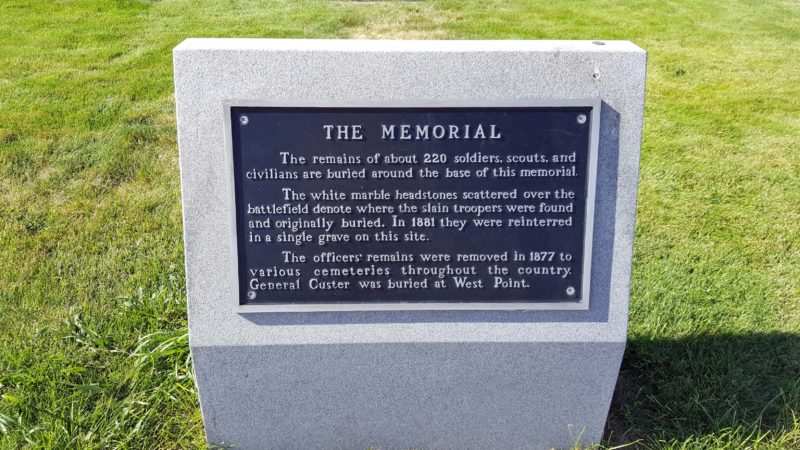
The plaque at the monument.
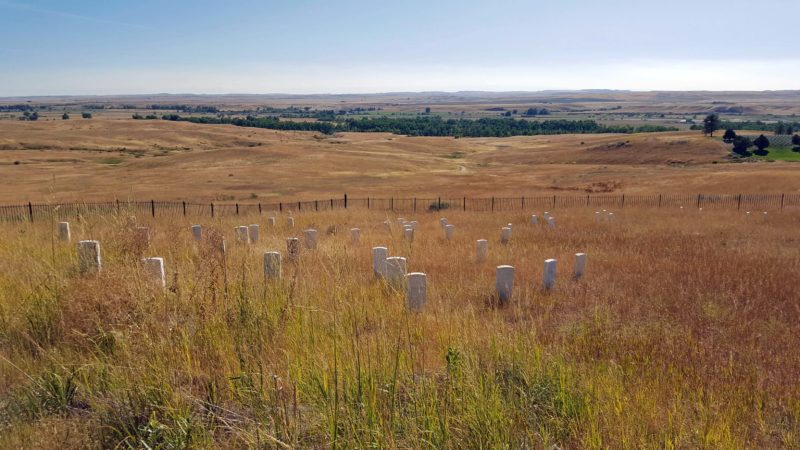
Looking the other way from the monument in the direction of the oncoming Indian charge.
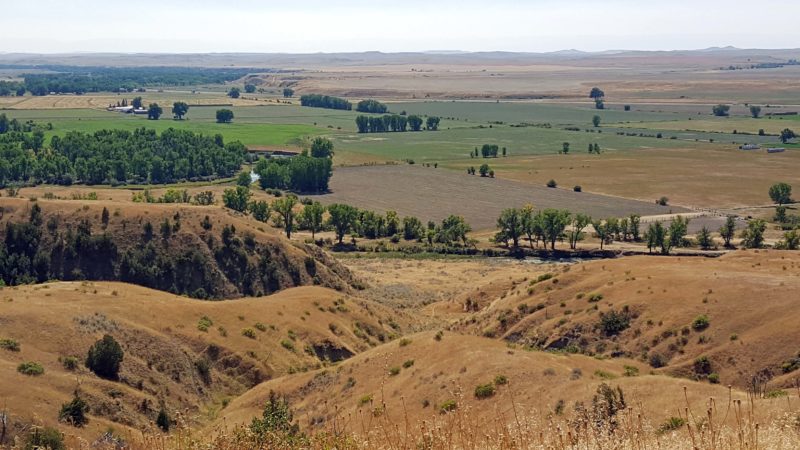
The Little Bighorn River flows along the path indicated by the trees.
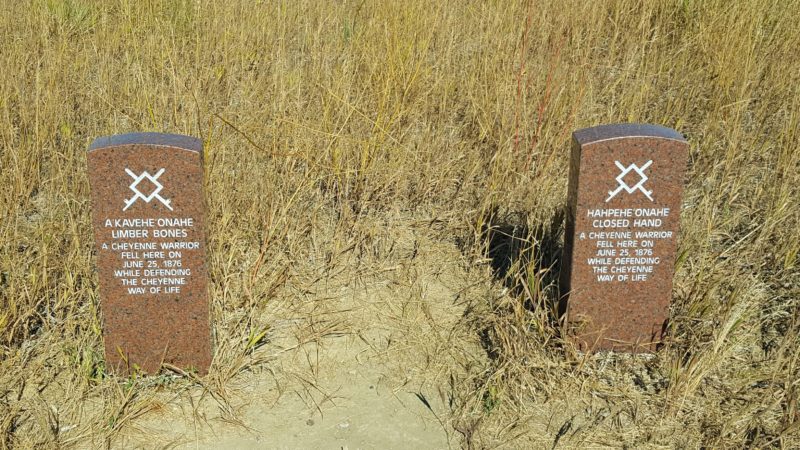
Indian headstones are made of red granite. They are also placed where the bodies were found. The Indians carried many of their dead away from the battleground for traditional burials, so there is no accurate count of their casualties.
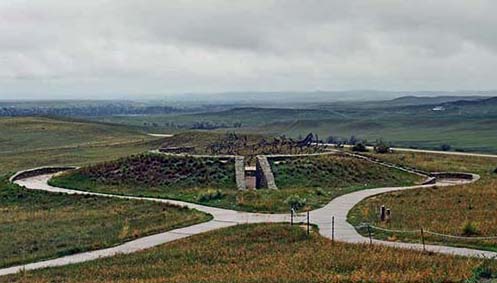
This is the memorial to the Indian warriors who fought at Little Bighorn. Its purpose is to promote peace among all people. It’s hard to see, but the center of the photo shows the Spirit Warriors sculpture. The inner circular area of the memorial is open. The opening in the circle’s wall frames the white monument in the first picture above when visitors look from the Spirit Warriors toward the foreground of the picture.
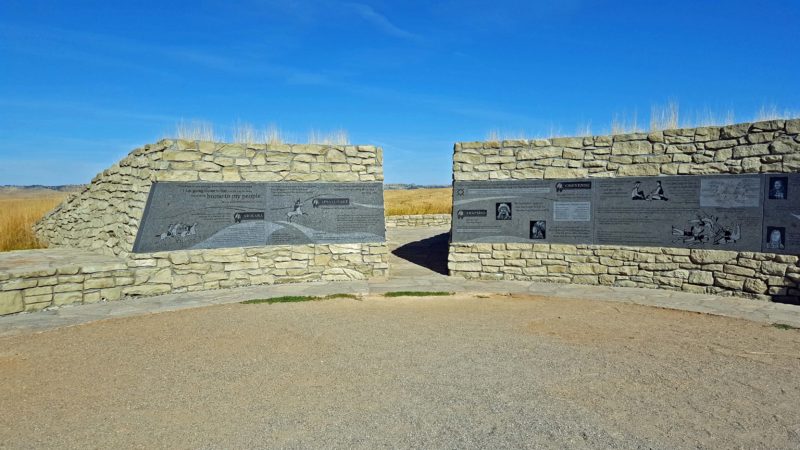
The Indian memorial is called “Peace through Unity.” Its inner walls have panels for each of the five tribes that fought in the battle. Each panel has a list of the tribe’s dead and words of peace. Some have pictographs as well.
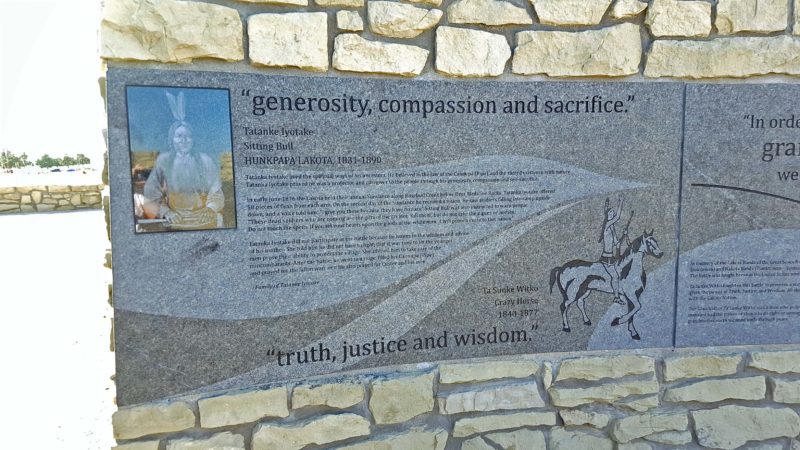
The Sioux plaque, with Chief Sitting Bull.
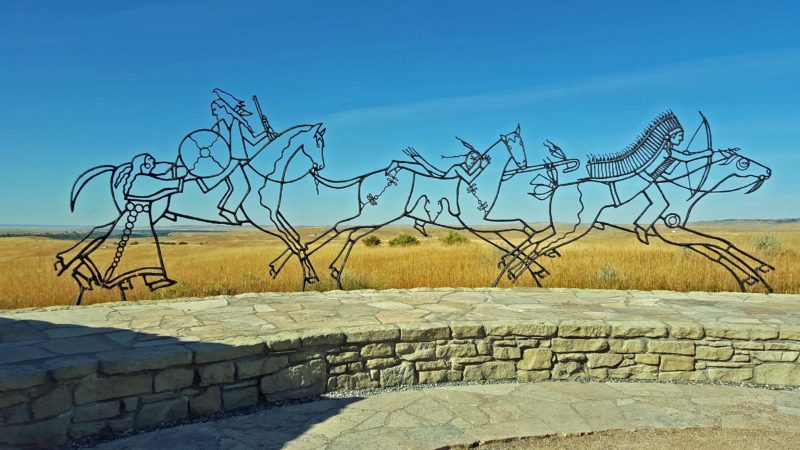
The Spirit Warriors sculpture. It is directly opposite the gap in the wall (photo above) through which water continually trickles, representing tears for the fallen warriors and soldiers.

Custer National Cemetery was established at the site of the battle. It was filled to capacity by 1886.